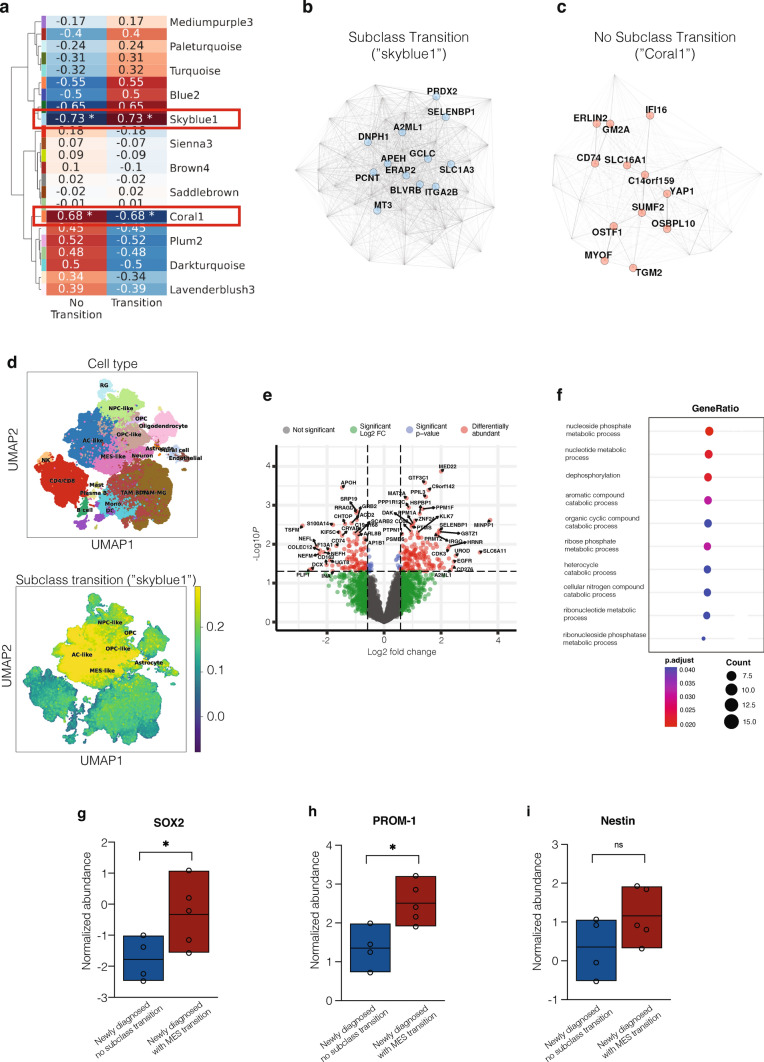Fig. 4.
Proteomic profiling of newly diagnosed IDH-wildtype glioblastomas with and without a subclass transition. a WCGNA analysis showed differentially correlated proteome modules between both subgroups. Tumors with a subclass transition showed a significantly enrichment of the module “skyblue1”, while non-transitioning tumors have higher protein abundance in module “coral1”. b Most abundant proteins for tumor with a subclass transition (referring to module “skyblue1”). c Most abundant proteins for tumor with a subclass transition (referring to module “skyblue1”). d Integrating public transcriptomic single-cell data showed an AC-/OPC- and MES-like character in tumors with a subclass transition. e Volcano plot of -log10 (p value) against log2 fold change representing the differently abundant proteins at time of diagnosis between tumors of with a subclass transition as compared to tumors without a transition. f Dot plot illustrating most significantly upregulated gene ontology terms at time of diagnosis in glioblastoma with a subclass transition. e–g Protein abundance of stem cell markers from tumor tissue of first surgery were compared between glioblastomas without transition and with mesenchymal transition. AC astrocytic, OPC oligodendrocyte precursor cell, MES mesenchymal, SOX Sex determining region Y-box 2, PROM prominin

